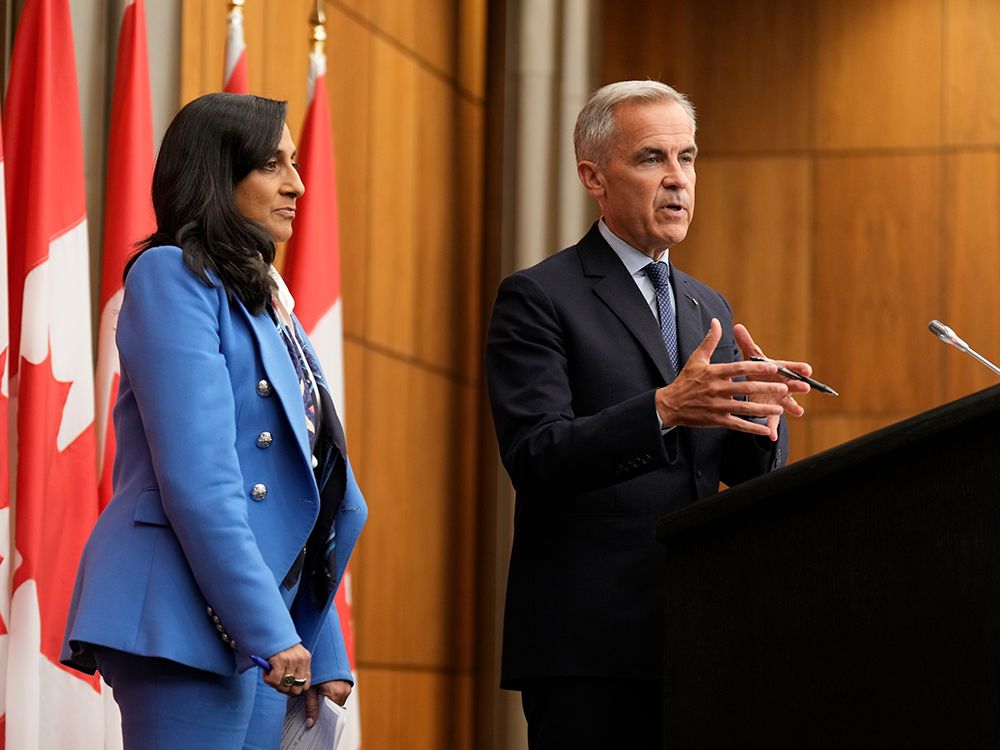
OTTAWA — Prime Minister Mark Carney said it is “possible” that negotiations for a new economic and security agreement with the United States will not conclude by Aug. 1, but political observers say Canadian negotiators should take the time they need to get to the best deal.
Carney was meeting with his cabinet on Wednesday to discuss the state of trade negotiations. U.S. President Donald Trump has said he would
increase tariffs to 35 per cent on Canadian goods
if both sides can’t get to a deal by the Friday deadline.
“As you know, we’re seeking the best deal for Canadians. We have not yet reached that deal. Negotiations will continue until we do,” the prime minister told reporters during a press conference after the cabinet meeting.
Most of the goods crossing the border are protected by the Canada-U.S.-Mexico free trade agreement (CUSMA).
But Trump has slapped tariffs on a number of goods entering the U.S. that aren’t covered, most notably steel and aluminum, which are subject to 50 per cent levies. Softwood lumber is also subject to 21 per cent tariffs. And on Wednesday, Trump signed a proclamation for 50 per cent tariffs for all copper products starting Aug. 1.
Brian Clow, who served as former prime minister Justin Trudeau’s deputy chief of staff and his executive director of Canada-U.S. relations, is predicting both sides will likely not be able to come to a deal by Friday given the long list of “unresolved issues” at the moment.
Clow said the Canadian side should be prepared to “walk away if the Trump team is demanding too much” and is the view Canadian public opinion will be on their side.
“I think (Carney) will be judged on the deal he gets, not necessarily how quickly we get a deal,” he said. “And I think Canadians actually will give this prime minister a lot of space to take his time if there’s not a good deal on the table.”
Minister for Canada-U.S. Trade Dominic LeBlanc and Carney’s chief of staff Marc-André Blanchard are currently in Washington D.C. in hopes of coming to an agreement. Carney said LeBlanc and senior officials will remain in the U.S. capital “in pursuit of that goal.”
Meanwhile, Trump’s list of demands and grievances has been evolving.
A U.S. source close to the negotiations, who only spoke on condition of anonymity, said Trump wants Canada “to pay its fair share for the Golden Dome” —
a missile defence system that could take decades to build
and could cost tens of billions of dollars to participate in.
The source said Trump also expressed wanting North American energy dominance that could be achieved with Canada’s natural resources but complained that there is too much opposition in Canada to pipelines by those who “prefer windmills and green energy scams.”
Border security was reportedly another sticking point from the U.S. perspective — more specifically fears around China using Canada “as a platform to gain entry and influence in North America” beyond fentanyl, said the source.
Trump had originally pointed to the
flow of fentanyl coming into the U.S.
to impose 25 per cent tariffs on non-CUSMA compliant goods, but the idea that Canada is a large exporter of the deadly drugs to its southern border
has been debunked by several analysts
.
Trump has already struck deals with the United Kingdom, Indonesia, Vietnam and the Philippines, and
and
which all include a relatively lower level of tariffs in exchange for several economic concessions.
Fen Osler Hampson, a professor of international affairs at Carleton University and co-chair of its expert group on Canada-U.S. relations, said Canada could benefit from taking its time in negotiating with its largest trading partner while Trump strikes more deal.
That way, he said, Canadian negotiators will be able to compare and contrast the bilateral trade deals Trump is making with other countries to get a lower tariff rate, and get more information about the pressure points they could use to strike the best deal possible.
“It’s what I call the last-mover advantage,” said Hampson, referring to a well-known business tactic which consists of the advantage a company has when it is the last to enter a market because it can learn from others’ mistakes and improve on what already exists.
On Wednesday, Carney said Trump’s revealed approach is to have a baseline tariff in certain strategic sectors to the U.S. economy, such as aluminum, steel, automobiles, pharmaceuticals, semiconductors, lumber and more, with “very few relative exceptions.”
Hampson said the longer negotiations go on, the more pain American consumers will feel. Right now, they have been mostly shielded from its effects given that companies have either been stockpiling products or making up for the tariff loss in their profit margins.
“These costs are going to start getting passed on to the American consumer. It’s only a matter of time.”
National Post
calevesque@postmedia.com
tmoran@postmedia.com
Our website is the place for the latest breaking news, exclusive scoops, longreads and provocative commentary. Please bookmark nationalpost.com and sign up for our newsletters here.
